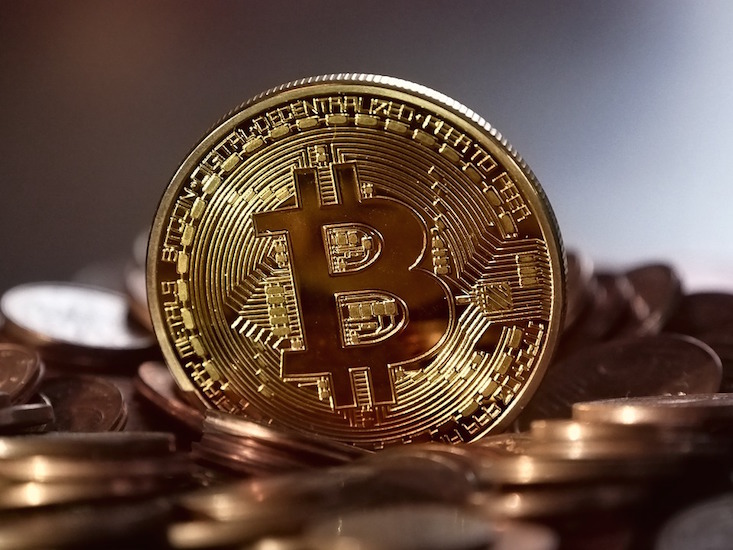Telegram Open Network: Pavel Durov’s bid to build a sovereign online economy to rival Bitcoin
Can Telegram succeed where Bitcoin has failed? The new blockchain project from Russia’s greatest digital entrepreneur has the power to change the internet forever — but only if it works.
Right now, even as you’re reading this, the world is standing on the verge of a new technological era. In this new world, ordinary people will finally take back control of the data — and cash — that constantly flows online.
At least, that was the world that Nikolai and Pavel Durov, founders of the Telegram Open Network (TON), sold to more than 100 investors in 2018. The pitch worked. The pair raised a staggering $1.7 billion to bring TON to life. From the second news of the project hit the press (via a leaked white paper), the internet hype machine went into overdrive.
At the heart of the venture is blockchain: the same technology that underpins cryptocurrencies like Bitcoin. It uses a network of computers to check and verify exchanges — such as exchanges of money — between users, without relying on a middleman such as a bank to ensure that everything had been done fairly. The Durovs’ ambition was to take that tech mainstream. The TON has been sold as the complete package: somewhere where blockchain can be used for signing contracts or swapping data, without third-party interference. Users will be able to use it to buy and sell, using a special cryptocurrency, simply called Gram. To get the job done, the platform needs to be fast, secure and user-friendly enough to be used daily. Yet despite the hype, one question looms large: can TON live up to its grand promise?
TON has been sold as the complete package: somewhere where blockchain can be used for signing contracts or swapping data, without third-party interference. Despite the hype, one question looms large: can TON live up to its grand promise?
Satoshi Nakamoto, the mysterious mastermind behind Bitcoin, also envisioned it as a way of paying for everyday transactions without relying on an institutional middleman. Ten years after it launched, Bitcoin may be a household name — but it’s hardly a mainstream tool. Having spent its formative years in secluded corners of the internet, populated by cryptography buffs and tech-libertarians, Bitcoin and other, alternative cryptocurrencies (collectively known as “altcoins”) have instead risen to notoriety with a series of headline-grabbing price spikes.
By the time the price of Bitcoin hit its all-time high of roughly $20,000 back in late 2017, crypto had attracted millions of adventurous investors who sought to capitalise on the digital gold rush. Rather than becoming the go-to currency for transactions online, crypto emerged in the mainstream as a tool for speculators hoping to making a quick buck.
Bitcoin’s price rollercoaster isn’t the only reason why digital money has failed to catch on, however. Certain design features at the heart of blockchain has also made it impractical for everyday use.
Blockchain technology uses encrypted ledgers that are constantly maintained by a network of computers — also called nodes — with a special system of incentives to make sure that each computer does its bit in a fair and honest way. In order to add new transactions to the digital “blocks” which make up the ledger, each node also needs to solve certain mathematical puzzles. These problems are known as Proof of Work (PoW): they don’t exist for any particular reason, apart from proving that each computer is putting in enough effort to update the ledger properly. Whichever node completes the puzzle first is rewarded with some currency or bitcoin that it gets to keep — giving everyone an incentive to work as hard as they can. But these calculations also have a downside. All that extra effort also means that nodes are consuming more electricity, driving up prices and blockchains’ already exorbitant energy consumption. Other, more energy-efficient systems are still being developed and tested. For now, however, the major players in the crypto field, such as Bitcoin and Ethereum, still rely on PoW.
Back in 2017, when crypto prices surged and millions of users flocked to the network, the demands placed on the blockchain computer network also grew. As nodes were forced to work harder, it took longer and longer for transactions to be processed. If users wanted to speed up the process, they had to pay a transaction fee to make sure that their transaction would be pushed up the queue. As more and more users joined, those fees grew and grew. Fees for small transactions started to exceed the value of the transactions themselves. The system simply couldn’t deal with demand.
Today, major blockchains can still only process a few dozen transactions per second. Compare that to the thousands of transactions carried out each second by companies such as Visa, and it becomes clear why traditional online payments are yet to be dethroned by their decentralised alternatives. So what make’s Durov’s TON different?
On paper, Pavel Durov certainly has the credentials to make the project work, as well as a loyal fan base to spread the word. Aged just 34, he has already been celebrated both as the most successful Russian-born technology entrepreneur in a generation and a champion for online privacy.
He publicly fell out of grace with the Russian government in 2011, after resisting attempts from a state-friendly media firm to take over Russia’s largest social media platform, VK. Durov, who founded the social network along with his brother Nikolai back in 2006, had reportedly refused to honour the authorities’ repeated requests to take down opposition-leaning posts and communities. In 2014, shortly before the pair were finally pressured to leave VK for good, the Durov brothers founded encrypted instant messaging service Telegram.
Predictably, the app — which was reported to have 200 million active users in March 2018 — has gained significant market shares in regions where the state is actively involved in policing speech online, such as Russia and Iran. Governments in both countries have ordered the messenger be shut down, with the Kremlin linking the app to terror attacks. Durov has remained defiant, instead proclaiming the start of a “digital resistance” protecting individual rights.
This strong pro-privacy stance appeals to the crypto-movement’s libertarian ideals. Telegram has become the default social platform for the blockchain community. The messaging service is uniquely positioned with both the core of early blockchain adopters, as well as millions of existing users who are yet to embrace the technology.
But this loyal following isn’t enough to guarantee TON’s success. Like Bitcoin, it still has to deal with problems with the blockchain system itself. TON hopes to do this by scrapping the established Proof of Work system, and using something else, called Proof of Stake (PoS). PoS gets rid of the complex mathematical equations, and instead rewards users based on how much of a certain cryptocurrency they own. The more TON tokens someone owns, the more power they have to validate the transactions of others.
Durov’s strong pro-privacy stance appeals to the crypto-movement’s libertarian ideals. Telegram has become the default social platform for the blockchain community
If TON manages to get a system like this to work, it would change the internet as we know it. The platform would become a self-contained economy with its own native currency: something which could quite literally upset the global balance of power online. Not everyone, however, believes that the plans are even possible in real life.
For John Conley, Professor of Economics at Vanderbilt University and Chief Economist of the GeeqChain Project, TON still has plenty of questions to answer, including issues on security and the quality of its network. “Although TON’s white paper is 132 pages long, it never specifies exactly how the consensus protocol works, what the incentives and penalties are for good and bad behaviour, or even how critical types of bad behaviour could be measured and proven,” he says.
These concerns have already scared some of crypto’s top investors away from the project. Others however, have wagered top dollar on the project’s potential success — and it shows. The project’s initial coin offering (ICO), where investors get the chance to snap up cryptocurrency early, made billions, cementing it as one of the biggest ICOs to date. The Durov brothers, however, could soon have company. Facebook is also rumoured to be working on its own native cryptocurrency, sparking a covert race to create the first social media-cryptocurrency hybrid. All want to be the first blockchain-based payment system to tap into the global consumer market. The stakes have perhaps never been higher.


